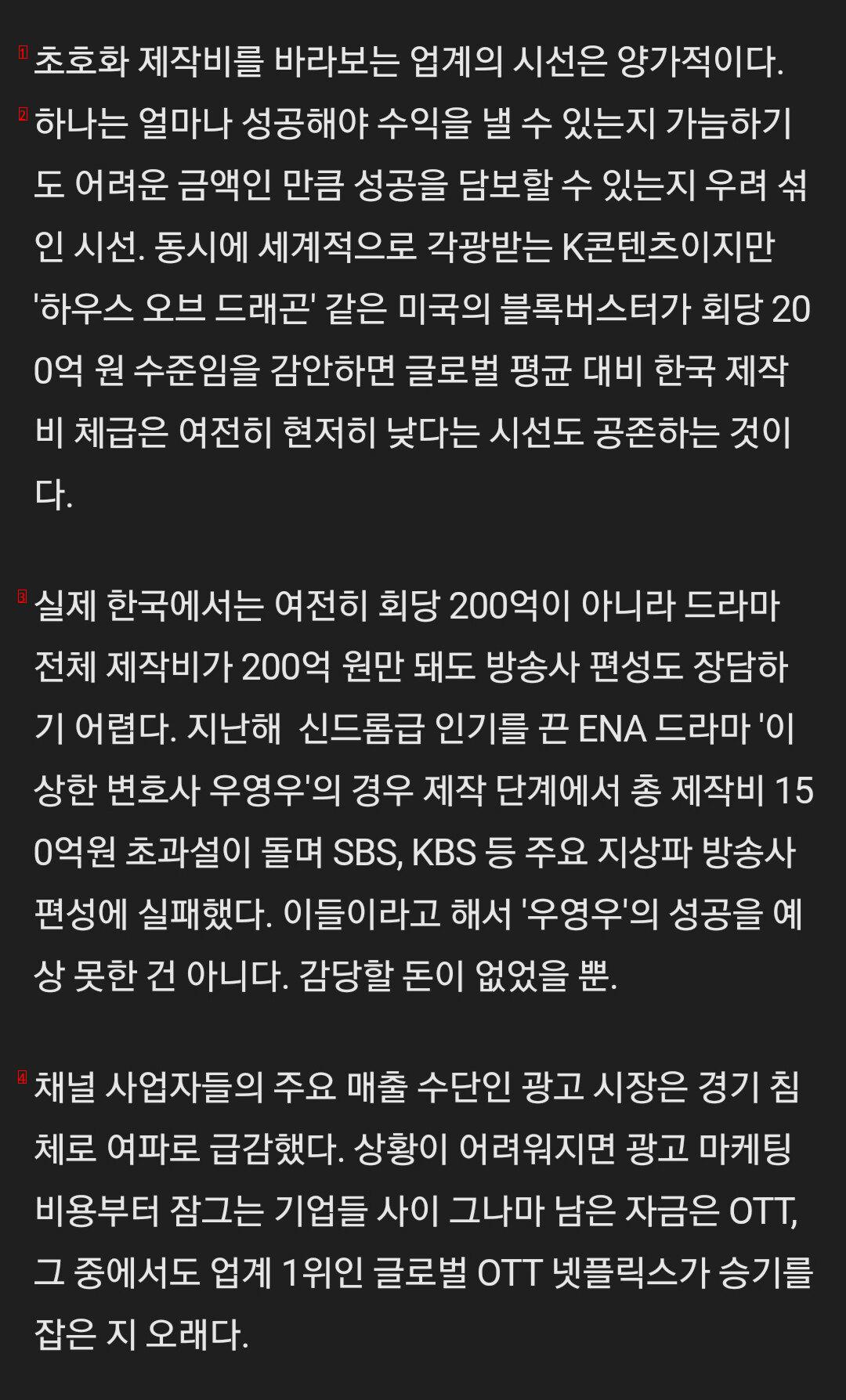
image text translation
(1)The industry’s view of ultra-luxury production costs is ambivalent
(2)One is that it is hard to estimate how much successful the company needs to make a profit, and K-content, which is drawing global attention as well as concerns over whether it can guarantee success, also shows that Korean production costs are still significantly lower than the global average, considering that U.S. blockbusters like “House of Dragon” cost around 20 billion won (approx
(3)In Korea, it is still difficult to guarantee the programming of broadcasters even if the total production cost is 20 billion won instead of 20 billion won per episode In the case of Woo Young-woo, a strange lawyer, who became popular last year with syndrome, failed to organize major terrestrial broadcasters such as SBS and KBS due to rumors that the total production cost exceeded 15 billion won during the production stage These people don’t mean that they didn’t expect Woo Young’s success. They just didn’t have enough money to handle it
(4)The advertising market, the main means of sales for channel operators, plunged in the aftermath of the economic downturn Global OTT Netflix, the No. 1 player in the industry, has long won the game among OTT companies that lock up advertising marketing costs when the situation becomes difficult
Woo Young-woo also said he was going to organize a terrestrial broadcasting program, but he went to ENA because he didn’t have enough money to handle it